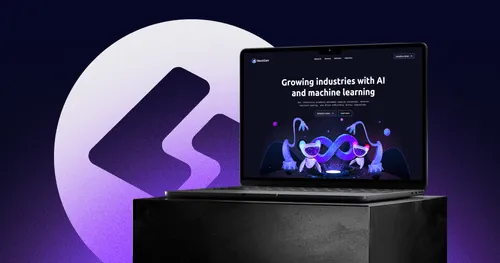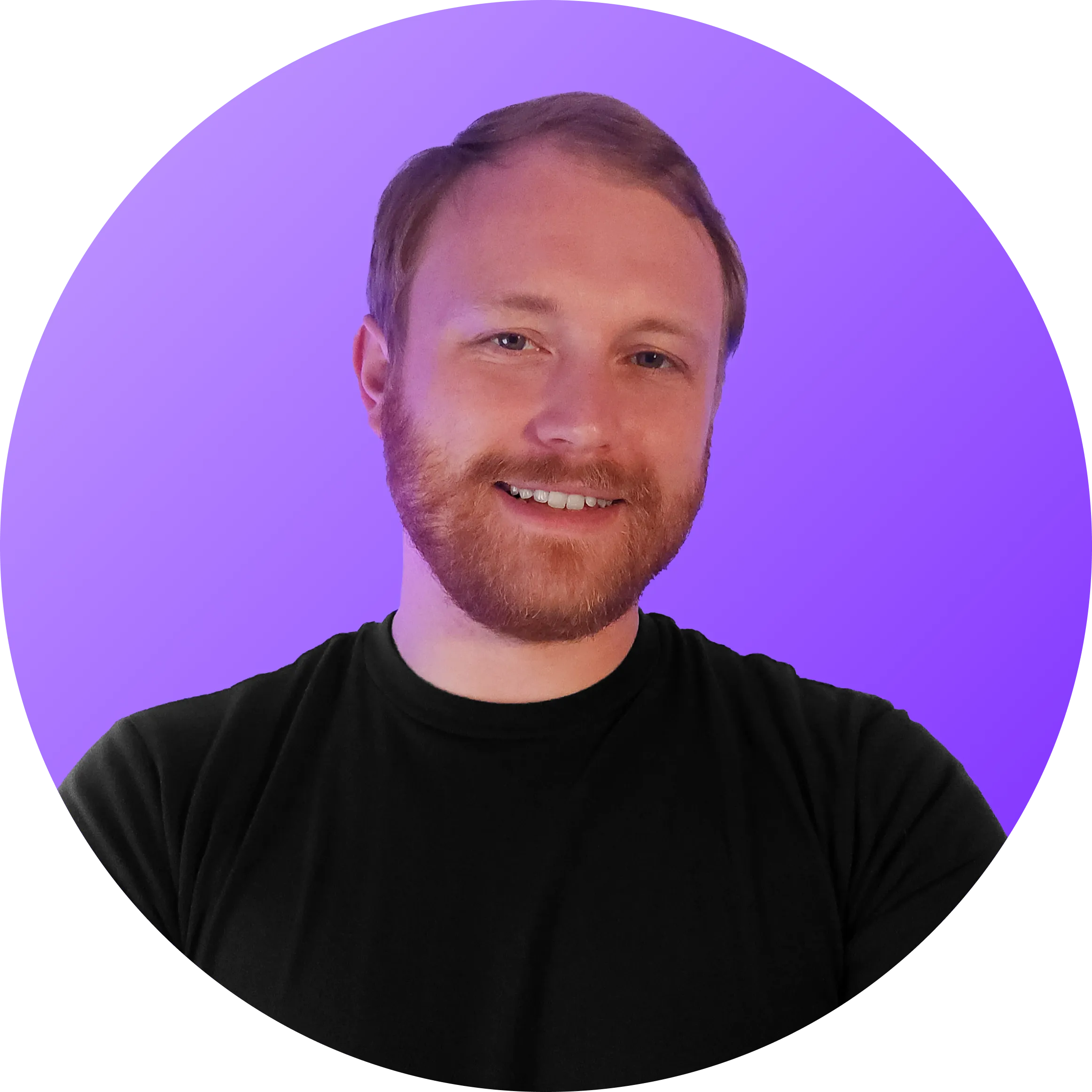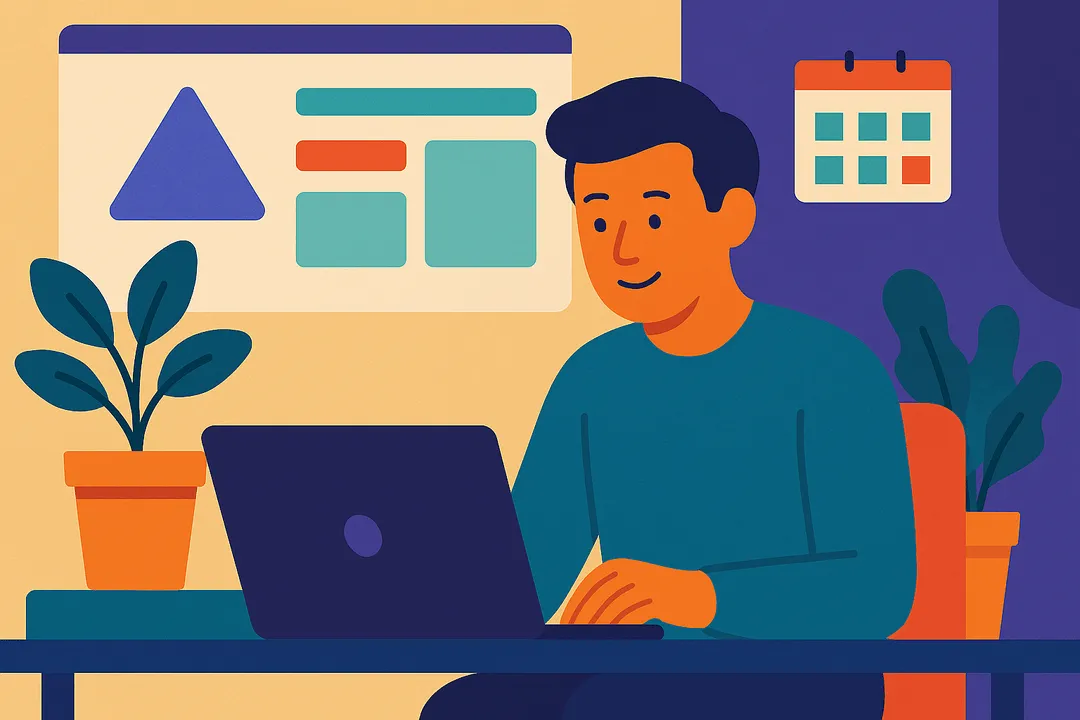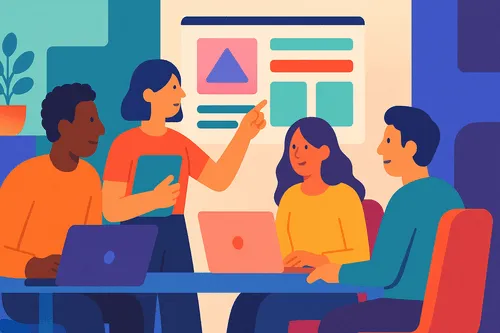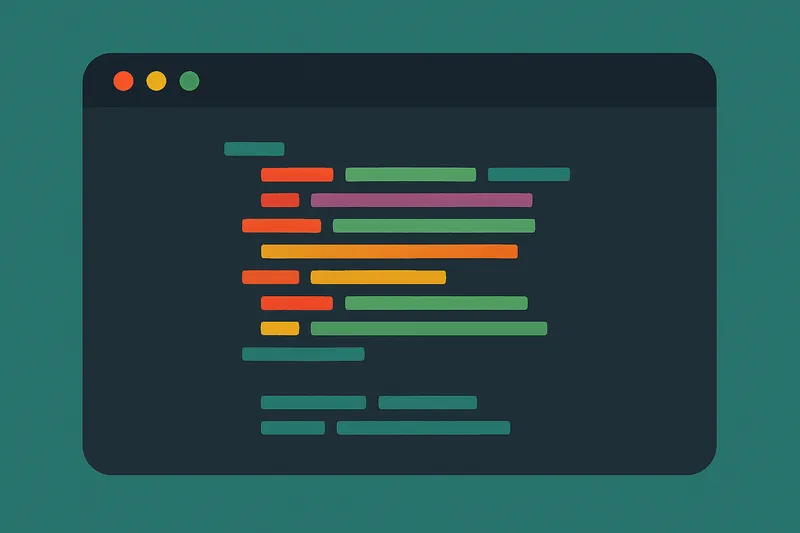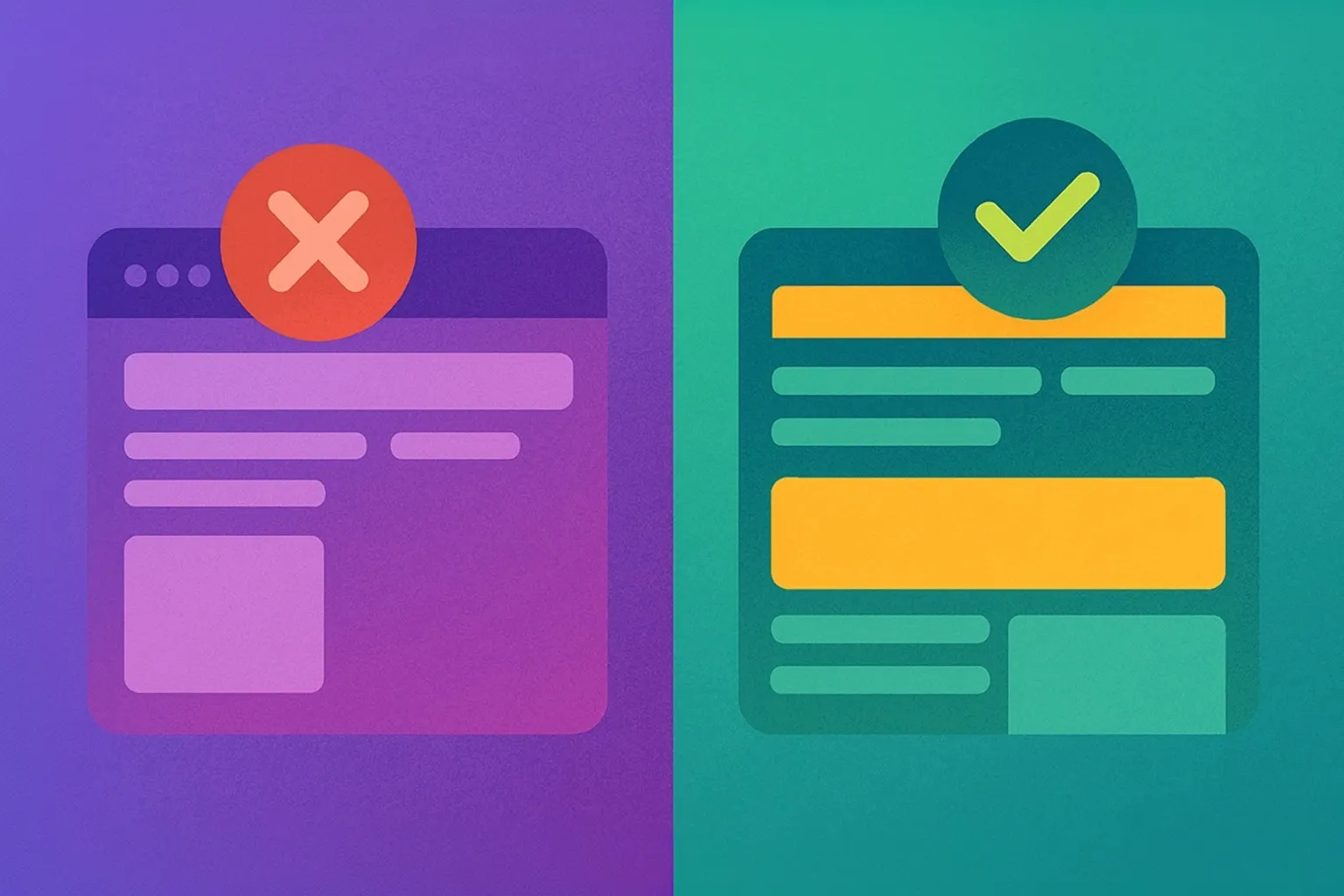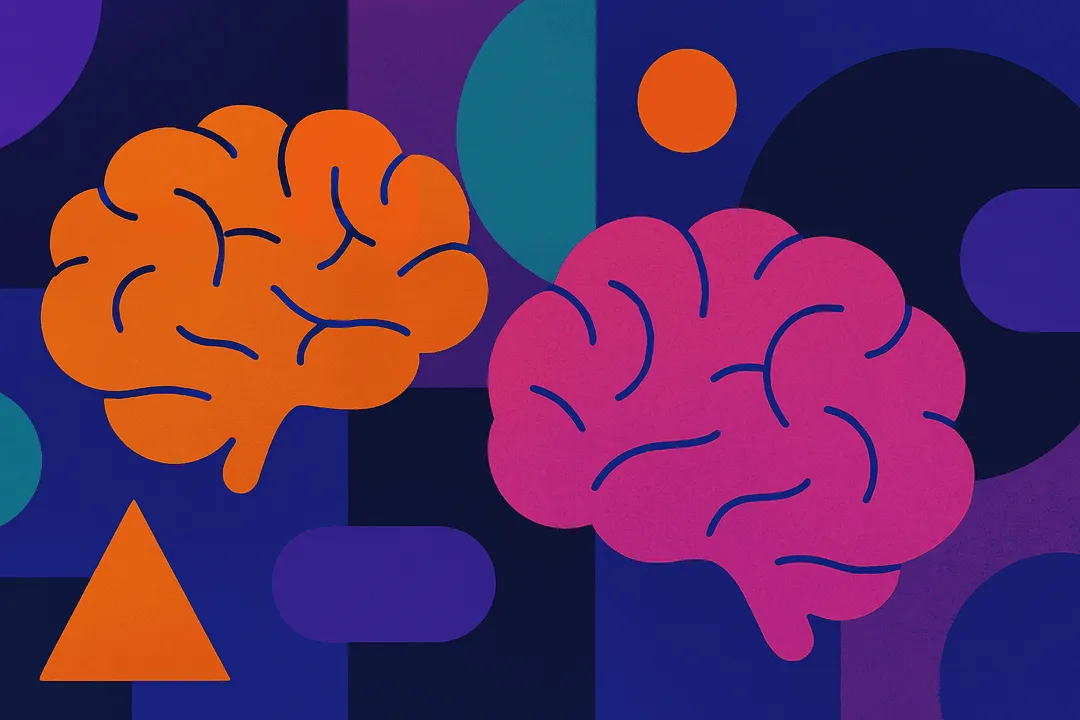

Why Every Web Designer Should Build a Second Brain

How many times have you had a brilliant idea during a client meeting, a morning shower, a night out with your friends, or a late-night brainstorming session, only to forget it later?
Or maybe you’ve read countless blog posts, watched tutorials, and learned new coding techniques—but when it’s time to apply that knowledge, you can’t quite remember where you stored those notes... if you even stored a note in the first place.
As a web designer, developer, or creative professional, managing today's flood of information is a constant struggle. It’s easy to feel like you’re drowning in new information, skills, trends—and that’s where the idea of building a “Second Brain” comes in.
Inspired by Tiago Forte’s approach, a Second Brain is a digital system that helps you save, organize, and actually use all those ideas, inspirations, and insights you’ve gathered over time.
This post will guide you through the most valuable takeaways from Building A Second Brain and show you how to adapt them for your own creative projects. You’ll learn how to capture the essence of everything you consume, organize it in a way that makes sense, and, most importantly, transform those bits of information into action.
What Is a Second Brain?
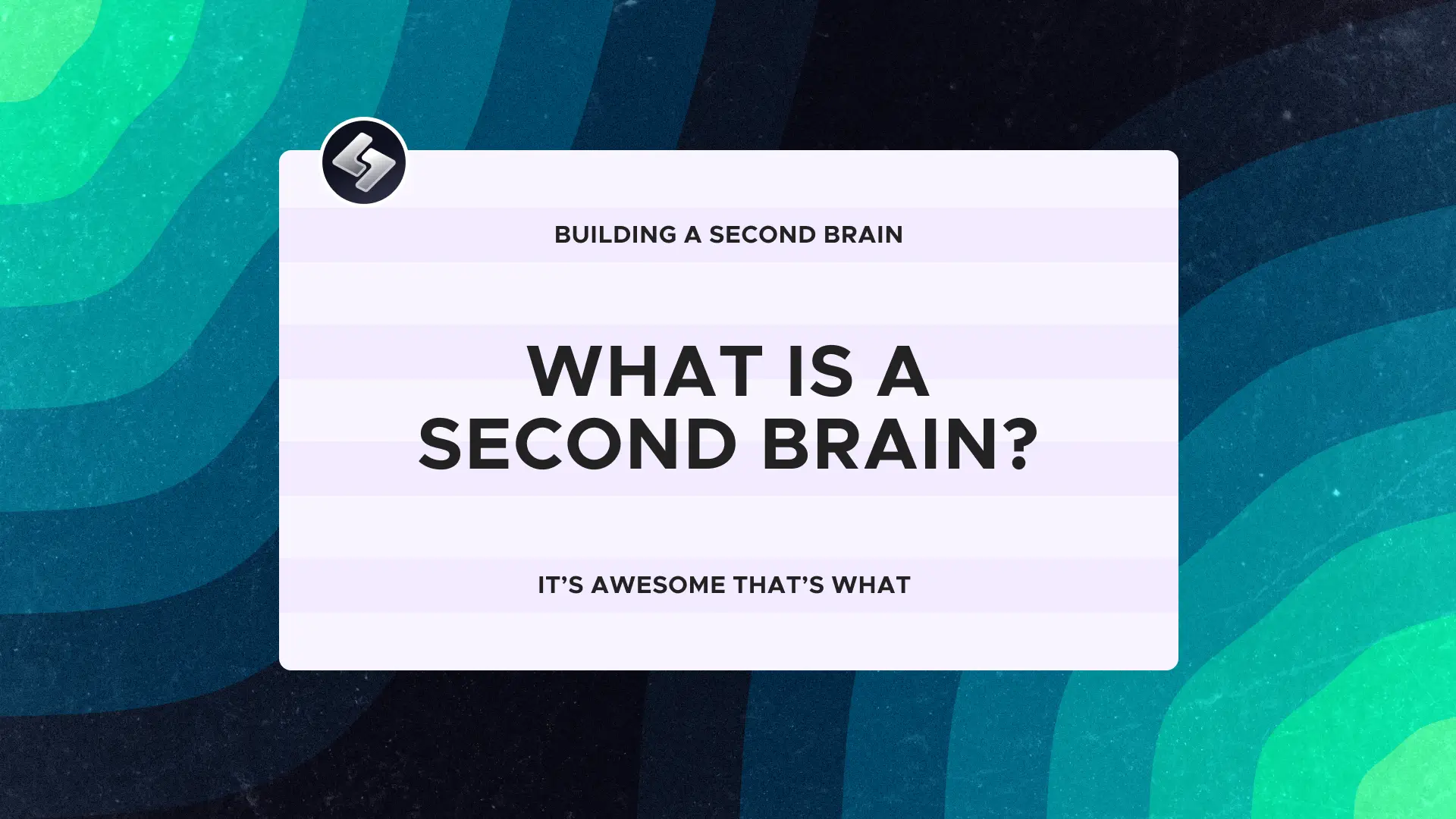
A Second Brain is a digital storage system tailored exclusively to your needs. Think of it as an external hard drive for your mind—a place where you can store thousands of ideas, insights, and inspirations, so your fickle human brain doesn't have to.
It’s not just about taking notes, it's about creating a reliable system where you can capture and organize everything you learn and actually use it. That way, when you need that valuable piece of information later, it’s right at your fingertips.
For web designers and developers, this could mean saving design ideas, code snippets, or user feedback—all in one organized space. It’s a way of turning the endless stream of information into a structured library that actually serves you, rather than getting lost in a pile of forgotten notes.
The key principle here is simple: your brain is best for having ideas, not for storing them.
A Second Brain offloads the burden of remembering everything, freeing up your mental space to focus on creativity and problem-solving. With a Second Brain, you can better connect the dots between what you’ve learned and what you’re working on, making your projects more innovative, efficient, and of a higher quality.
The CODE Method: Capture, Organize, Distill, Express
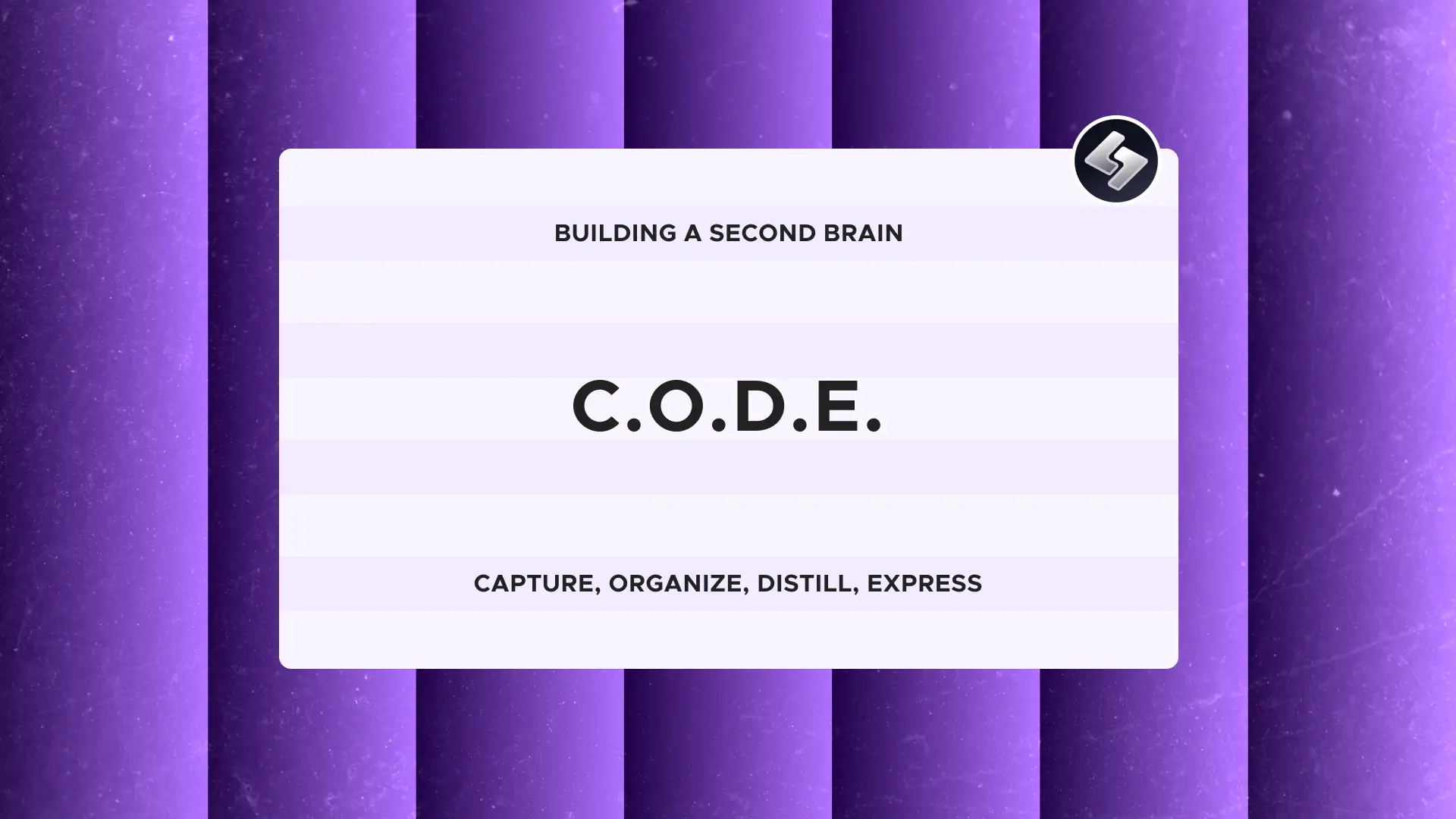
One of the most practical frameworks from Building A Second Brain is the CODE method: Capture, Organize, Distill, and Express. This method helps you turn scattered ideas into something you can actually use in your creative projects.
To put it plainly: CODE is a note taking strategy.
- Capture: Collect anything catches your eye, piques your interest, is useful etc.—whether it's a design trend, a code snippet, or a productivity tip. The goal is to capture anything and everything that sparks curiosity or might be useful in the future. For example, when you come across a helpful JavaScript function or an inspiring portfolio layout, save it with a few notes about why it resonated with you.
- Organize: Focus on organizing notes for action, not just for reference. Instead of stashing away a note based on where it came from or what topic it's related to, think about where it might be useful. For web designers, this might mean saving ideas directly into a folder for a specific client project or a future website redesign you’ve been brainstorming.
- Example: Let's say you find a note on SEO strategies that you'd like to use for your own website. Instead of storing that note in a generic "SEO" or "Web Design Tips" folder, store it directly in a folder dedicated to your project—the project being your website. We'll discuss more about organizing for action in the next section.
- Distill: As you revisit your notes, highlight, bold, or underline the core insights or most actionable points of the note. Make sure you can grasp the key takeaways of your note at a glance. It’s important to be able to pull out the best parts of an article or tutorial so that when you’re deep into a project, you can quickly apply that knowledge.
- Express: Finally, put your notes into action. This is where the magic happens. Use what you’ve captured and distilled to create something new—a blog post, a design mockup, or a code library. It’s all about moving from consuming information to actively using it to enhance your work.
- Expressing is sometimes the hardest part because it involves trimming the fat, and distilling all the notes and ideas you've gathered for a project. To truly create something polished, you'll need to make sure you only have the best and most valuable part of that content for your final result.
By following the CODE method, you’ll find that your notes become more than just digital clutter—they become a rich library of ideas that you can draw on during your creative process.
Organizing for Action: The PARA Method

One of the most effective ways to organize your Second Brain is with the PARA method, which stands for Projects, Areas, Resources, and Archives. This method is all about sorting information by how actionable it is, rather than by subject or source. Here’s a quick breakdown:
- Projects: These are your short-term tasks and deliverables. Your projects are the most actionable things you're working on. Think about active client projects, designing a new webpage, or launching a portfolio update. It’s anything with a clear goal and an end date.
- Areas: These are ongoing responsibilities that don’t necessarily have an end point, like maintaining your website, staying active on social media, or continuous learning in JavaScript. They need regular attention but aren’t “done” in the same way a project is.
- Resources: This is where you keep information that could be useful in the future—tutorials, design inspirations, articles about SEO, or even a collection of your favorite typefaces. It’s not actionable now, but it might be later.
- Archives: Store completed or inactive items here. Old projects, courses you’ve finished, or resources that are no longer relevant can all be tucked away. It’s like a digital attic for things you might need to revisit someday.
With modern note taking tools such as Notion, it's not really necessary to have an archives section, meaning you can stop at the "Resources" level of storing your notes. Why? Mostly because anything can be found by using the search functionality in your notes app—which is likely how you'll search through your resources anyways.
Using the PARA method ensures that when you’re searching for something, you’re more likely to find it based on what you’re currently working on, rather than sifting through unrelated notes.
For creatives and tech professionals, this approach keeps your ideas and information organized in a way that matches your real-world workflow.
Tools & Tips for Implementing a Second Brain
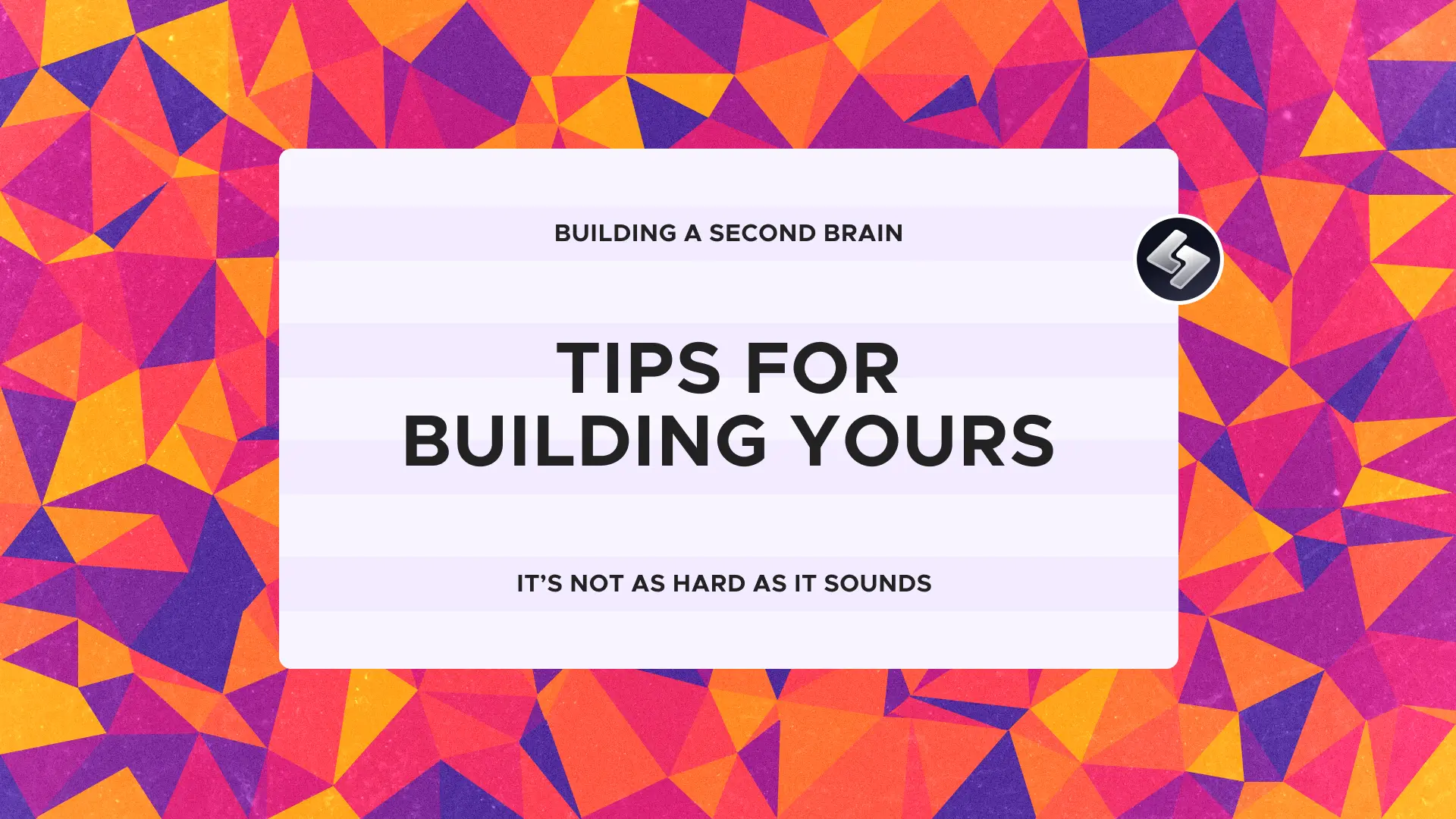
Building a Second Brain doesn’t have to be complicated or time-consuming. The whole purpose in adopting these strategies is to free up your mind and allow you more freedom to create.
With the right tools, you can start creating your own digital note-taking system quickly. Here are a few recommendations to get you started:
Don’t Reorganize Your Current Notes:
Using the PARA method is supposed to make your note taking and creative process easier, not harder.
Instead of reorganizing all of your past notes to fit the new structure, just gather all of them up into your preferred note taking software, and throw them in a folder or page that says something like “Old Stuff” or “All notes before MM/DD/YYYY”.
This way, if you ever need to reference any of your old notes, you’ll have one central place to find them. As you begin to gather new notes however, try allocating them based on their actionability in your new PARA set up.
Choose the Right Tool:
Popular options like Notion, Evernote, or Obsidian are great for building your Second Brain. Each of these platforms allows you to organize your notes, tag content, and keep everything in one place.
For example, Notion is perfect for those who want a more visual, customizable setup, while Obsidian is ideal if you like connecting ideas with linked notes.
Start Small:
Don’t worry about mastering every feature of PARA or CODE right away. Begin by capturing notes from a few key areas—like a client project you’re working on or an interesting design trend you want to explore.
As you get more comfortable, gradually organize those notes into your system using the PARA method and CODE techniques.
Focus on Actionability:
Remember, the goal is to make your notes useful. Tag your notes based on how you plan to use them, not just where they came from. For instance, if you saved an article on improving website load speed, tag it with “[Your current client project]” or “[Your website]” if you think it will help with a current site you're building, or an ongoing area of your life.
Distill Notes As You Go:
It takes time and energy to organize and distill your notes. The next time you’re working on something and need to review some of your notes, take a few extra seconds to bold, underline, or highlight the most important or useful takeaways.
This will make it easier to review the notes the next time around, and also help you squeeze out the most value from them.
Make Reviewing Your Notes a Habit:
Regularly review your notes to keep them fresh in your mind. This doesn’t mean rereading everything—you can skim through highlights or summaries you’ve created, or even just read the titles of notes.
This habit will ensure that valuable insights don’t get buried and that you can use your Second Brain to its fullest potential.
By choosing a tool that suits your style and starting with a few small steps, you’ll find that building a Second Brain becomes a natural part of your daily workflow, and you’ll see just how much it helps you turn inspiration into action.
Practical Strategies for Using Your Second Brain:

1. Create an Archipelago of Ideas:
Ever sit down to design a new website and feel overwhelmed by the blank screen? Instead, use your Second Brain to start with an “archipelago” of ideas.
Tiago references an archipelago of islands in the book to help us visualize this step. Think of Hawaii—it's one place [project] with many different islands all together [notes, ideas, inspiration].
Before diving into a new project, spend some time gathering relevant notes, inspirations, or snippets you’ve saved, and get them all into one place. This gives you stepping stones instead of starting from scratch—letting you build out your project with a head start, and letting your creativity connect the dots.
2. Build a Hemingway Bridge:
This technique helps you maintain momentum between work sessions. Instead of squeezing out every last drop of focus before you end your work, save the final minutes to jot down notes that can guide you next time.
Ernest Hemingway was known for stopping his writing sessions early. He would counterintuitively stop writing when he knew what the next part of the story should be (instead of continuing) because this would give him a head start the next time he sat down to write.
So instead of working until you're completely tired, use the last bit of your energy during a work session to set your future self up for success.
This might mean sketching out what the next steps should be, or noting any big challenges or questions still on your mind. Capture any details that might slip away if left too long, like specific design tweaks or client feedback. Set an intention for your next session, such as a particular feature to code or a milestone to reach.
This way, when you sit back down, you’ll have a clear path forward—no mental warm-up needed.
Think of it as leaving yourself breadcrumbs to pick up right where you left off.
For example, after wrapping up a design mockup, you could note ideas for the next feature or a potential layout change. This way, you avoid that "What was I doing again?" feeling when you return to your work.
3. Dial Down the Scope:
When projects start feeling too big or complicated, it’s easy to keep delaying them.
During the capture and organize phase of your research, it's easy to dream up all the amazing features your app, website, or product will have—and this is great! We want to let our brains dream up big ideas and build amazing things for the world.
The problem with dreaming big, though, is that you're likely going to keep adding more and more tasks to your project, which can often overwhelm you to the point of inaction.
Because of this, it can be extremely helpful to “dial down the scope”—make the project smaller and more manageable. You don’t need everything to be perfect before you complete a project.
For example, if you're building a new portfolio site, you don’t need all pages and features completed before launching. Start with a simple version, get it live, and add to it over time. The Second Brain helps here by storing the ideas and features you might add later, keeping them safe without overwhelming your current focus.
Wrap-up
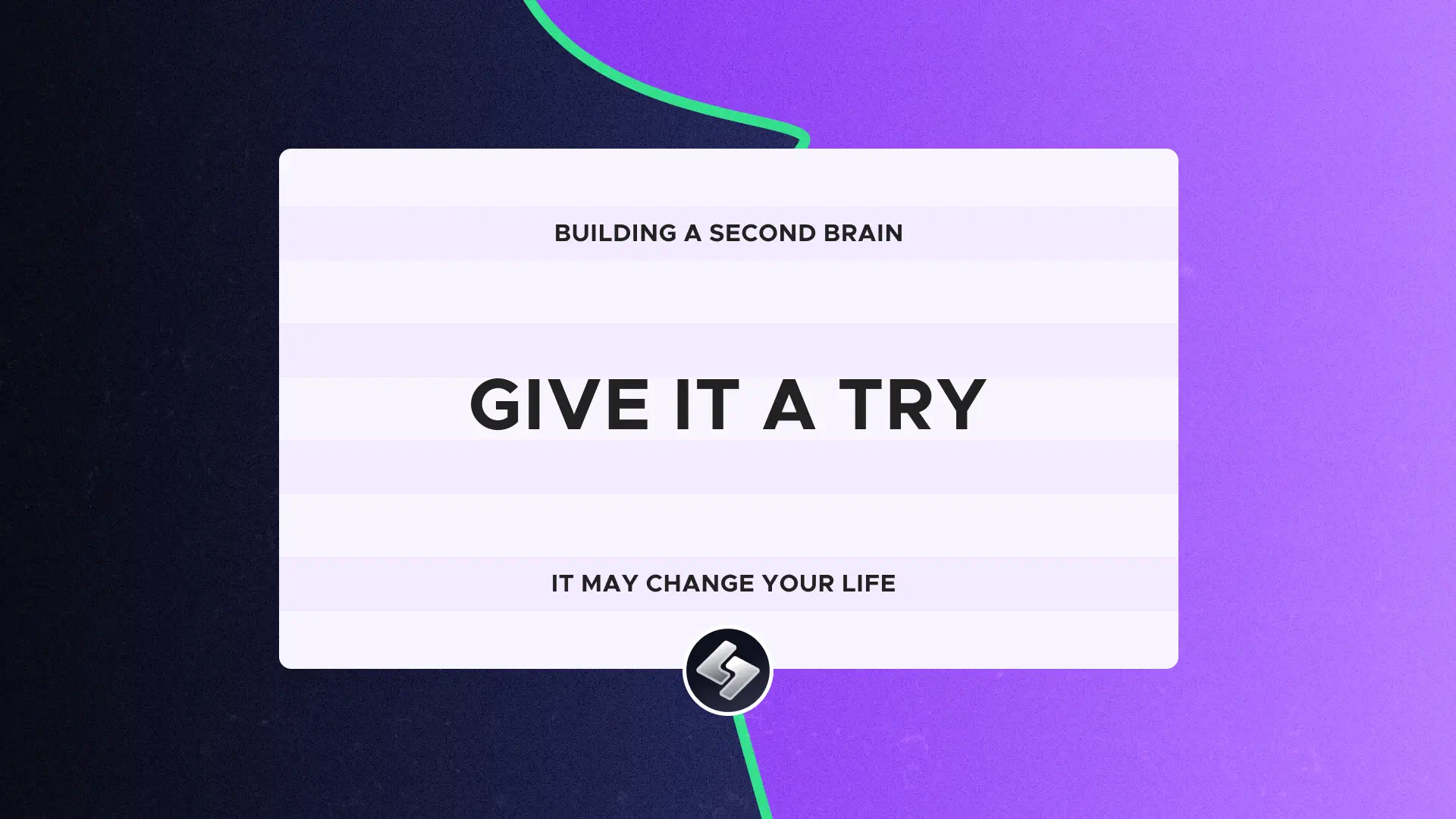
Building a Second Brain isn't about adding another task to your already full plate—it's about creating a note taking system that actually works for you. It’s about creating a place where you can offload all the information you collect, and focus on letting your brain do what it’s best at doing—creating things.
Whether you're managing client projects, learning new skills, or brainstorming your next creative idea, a Second Brain can transform how you store and use information.
Start with small steps like capturing your ideas and organizing them using the PARA method. Over time, you'll see how this approach can make your workflow smoother, your projects more focused, and your creative output stronger.
If you found this topic interesting, I highly recommend you check out Tiago Forte’s book Building A Second Brain.
If you’d like to know how I’ve built my own second brain, or want some extra tips and tricks—feel free to reach out!
More recent insights



